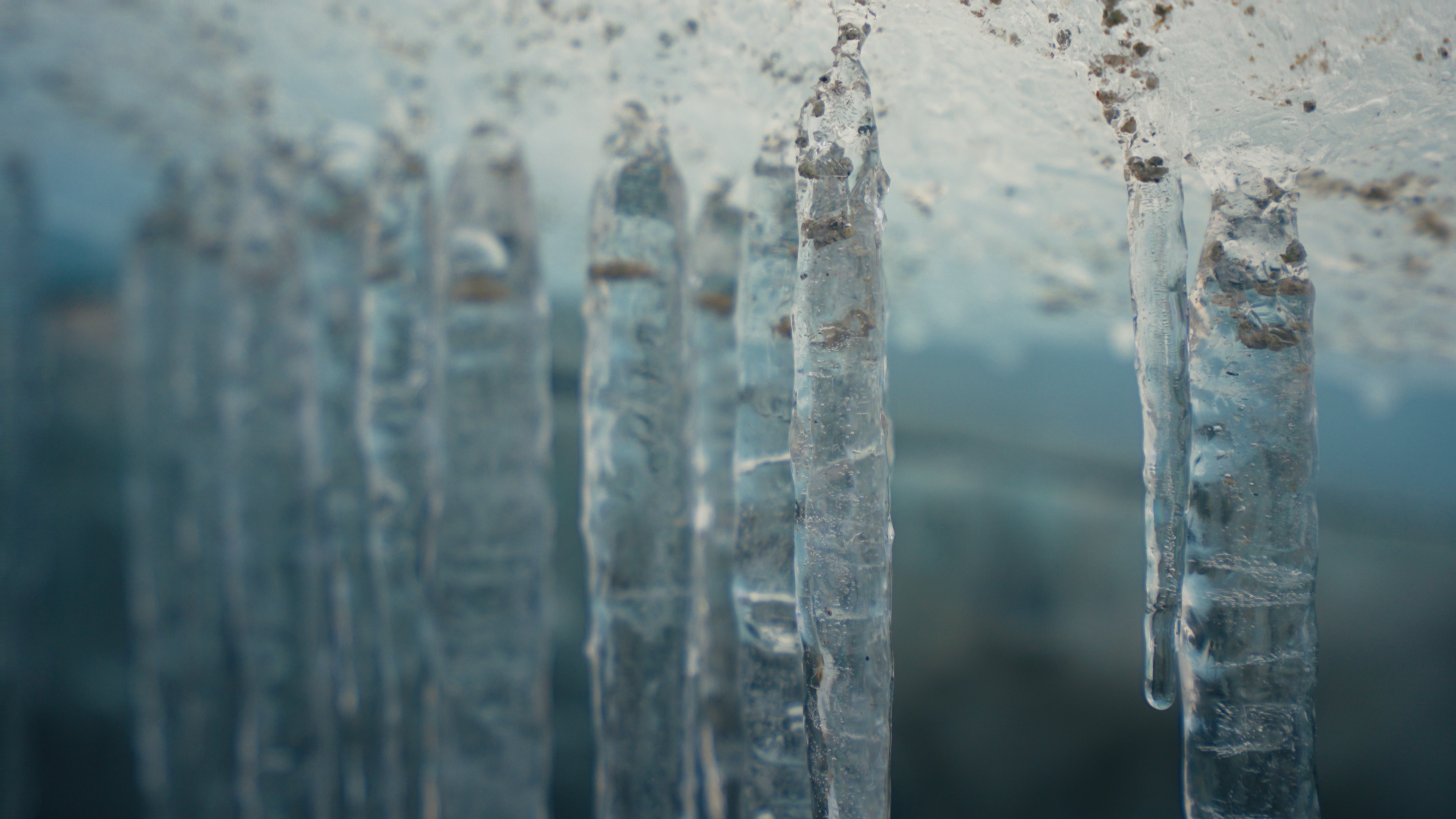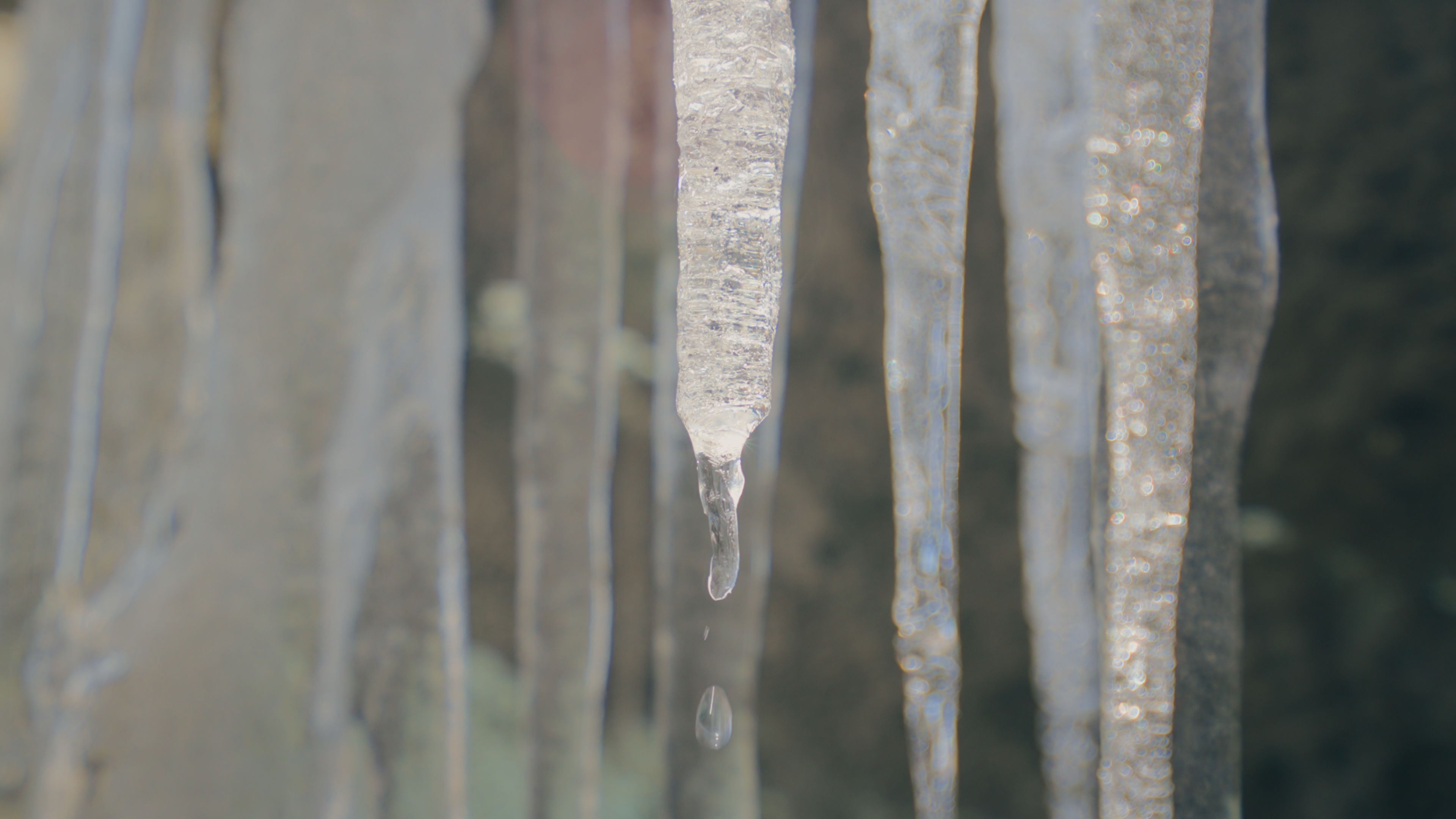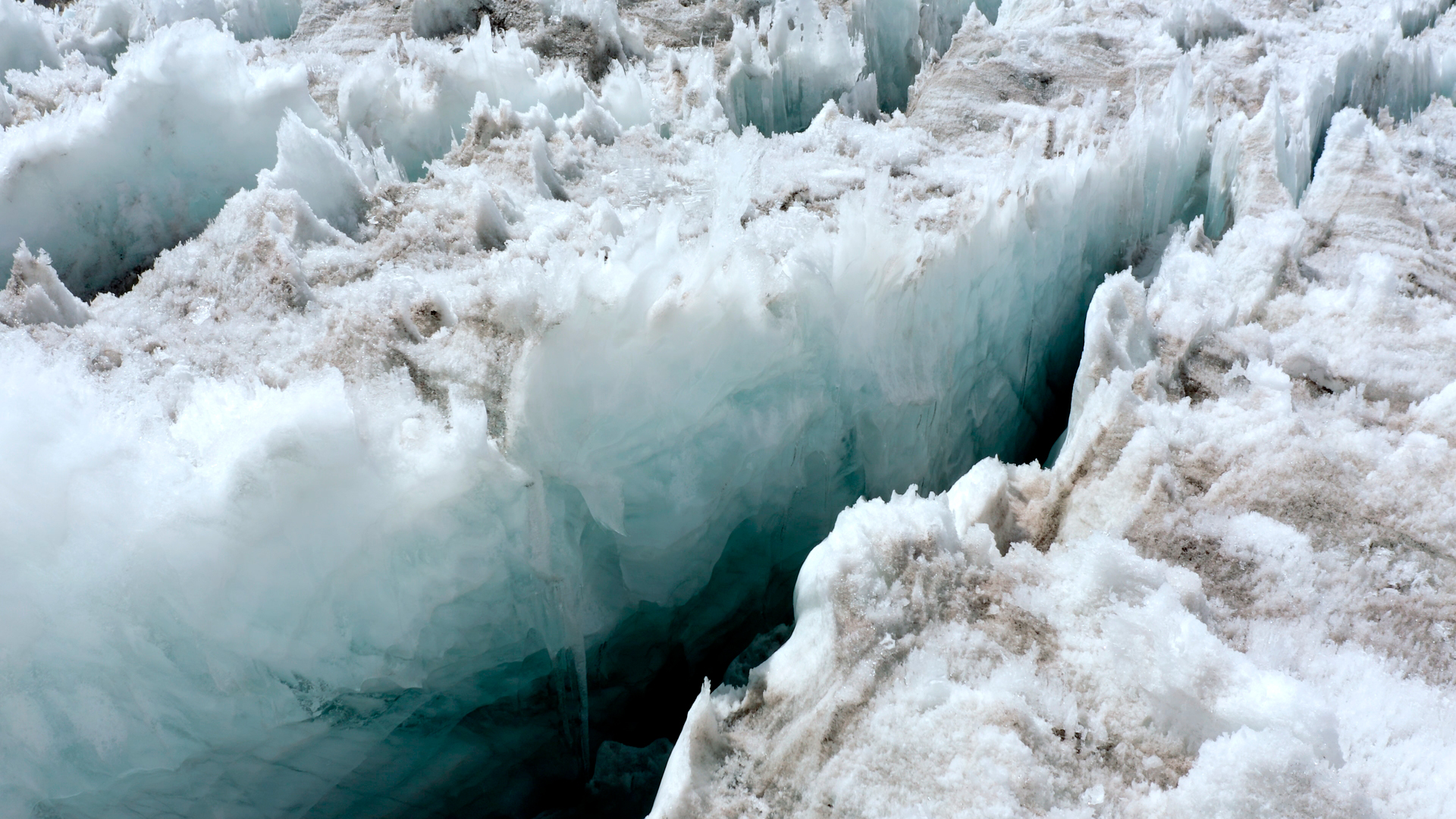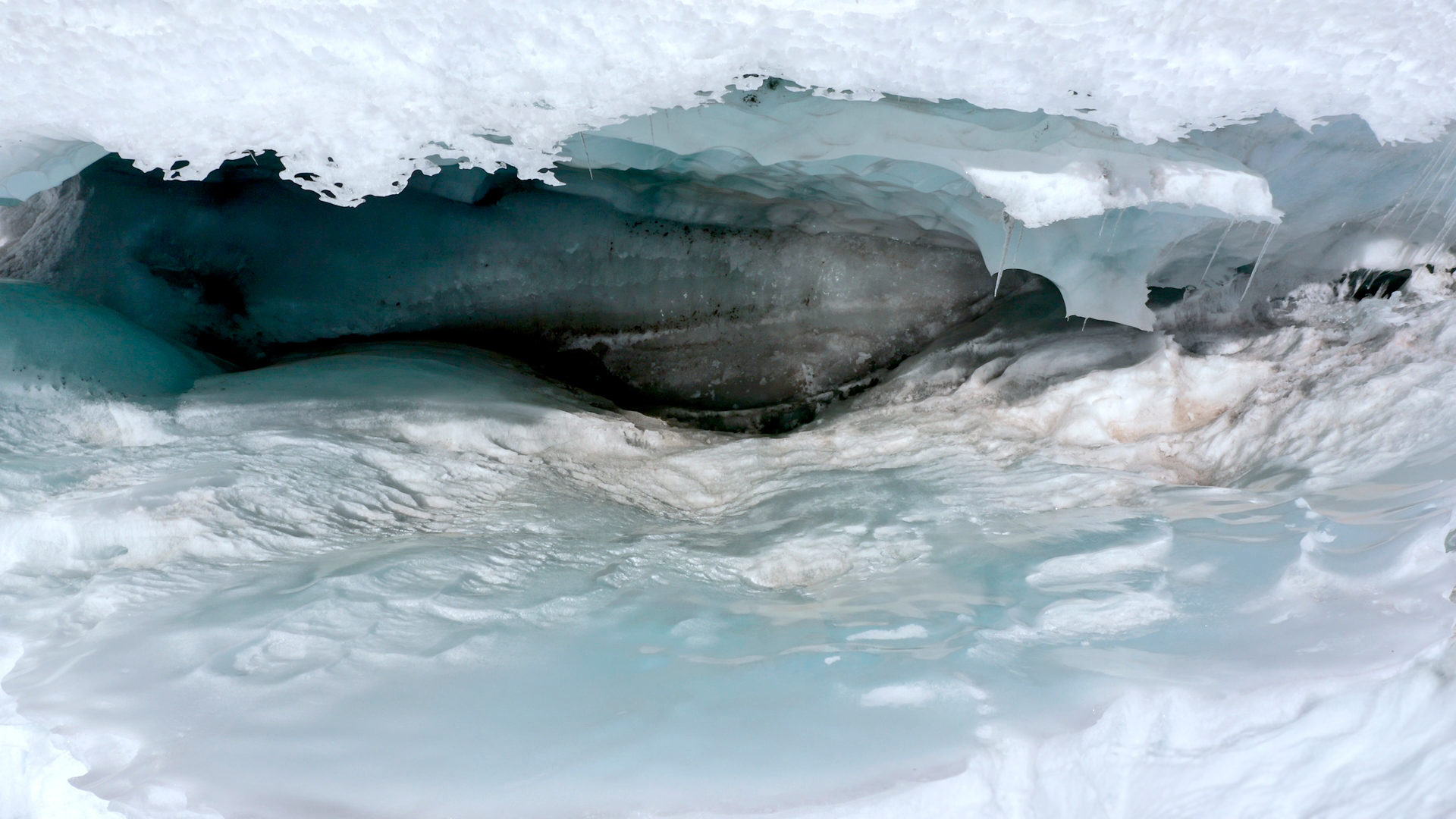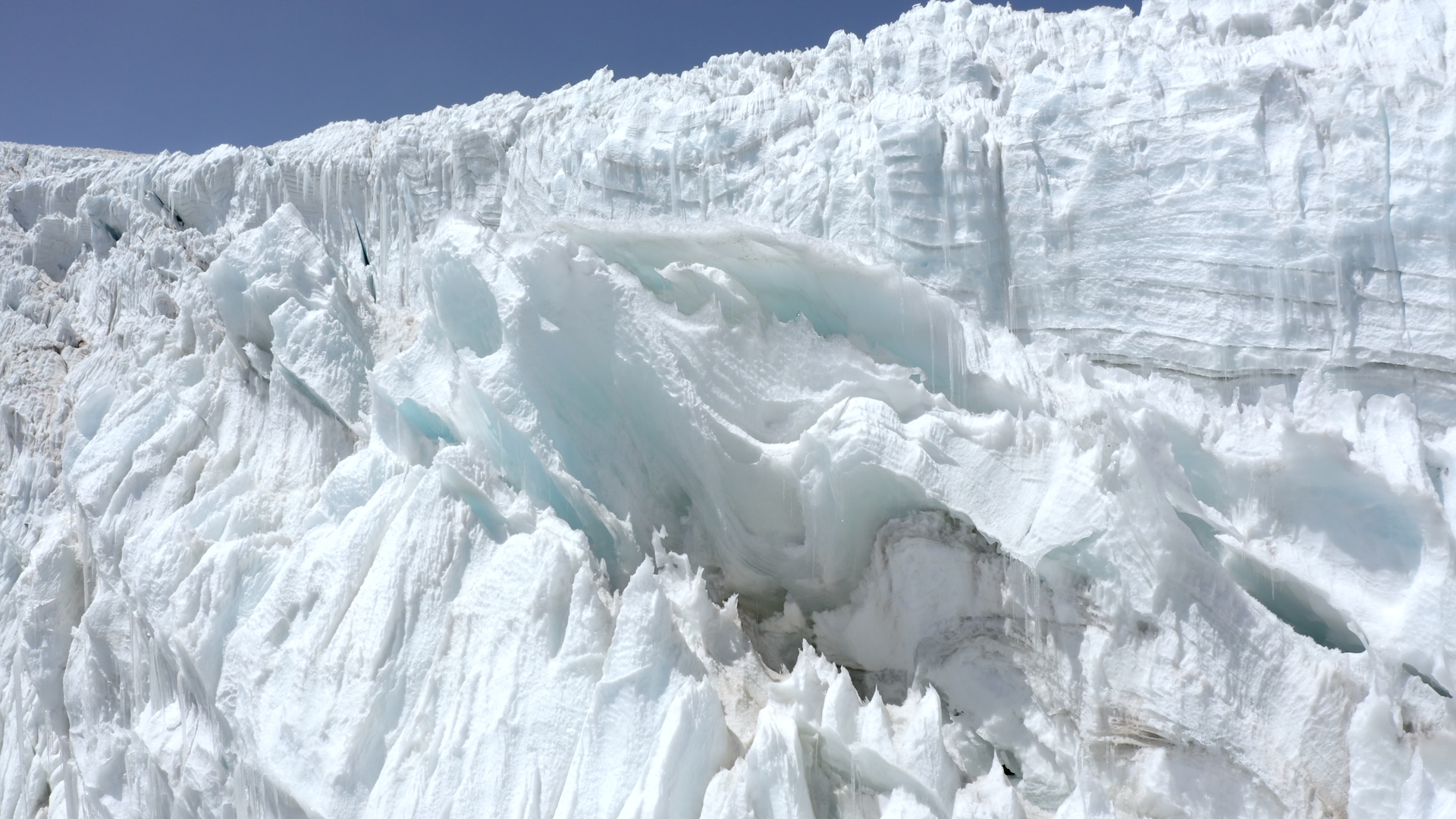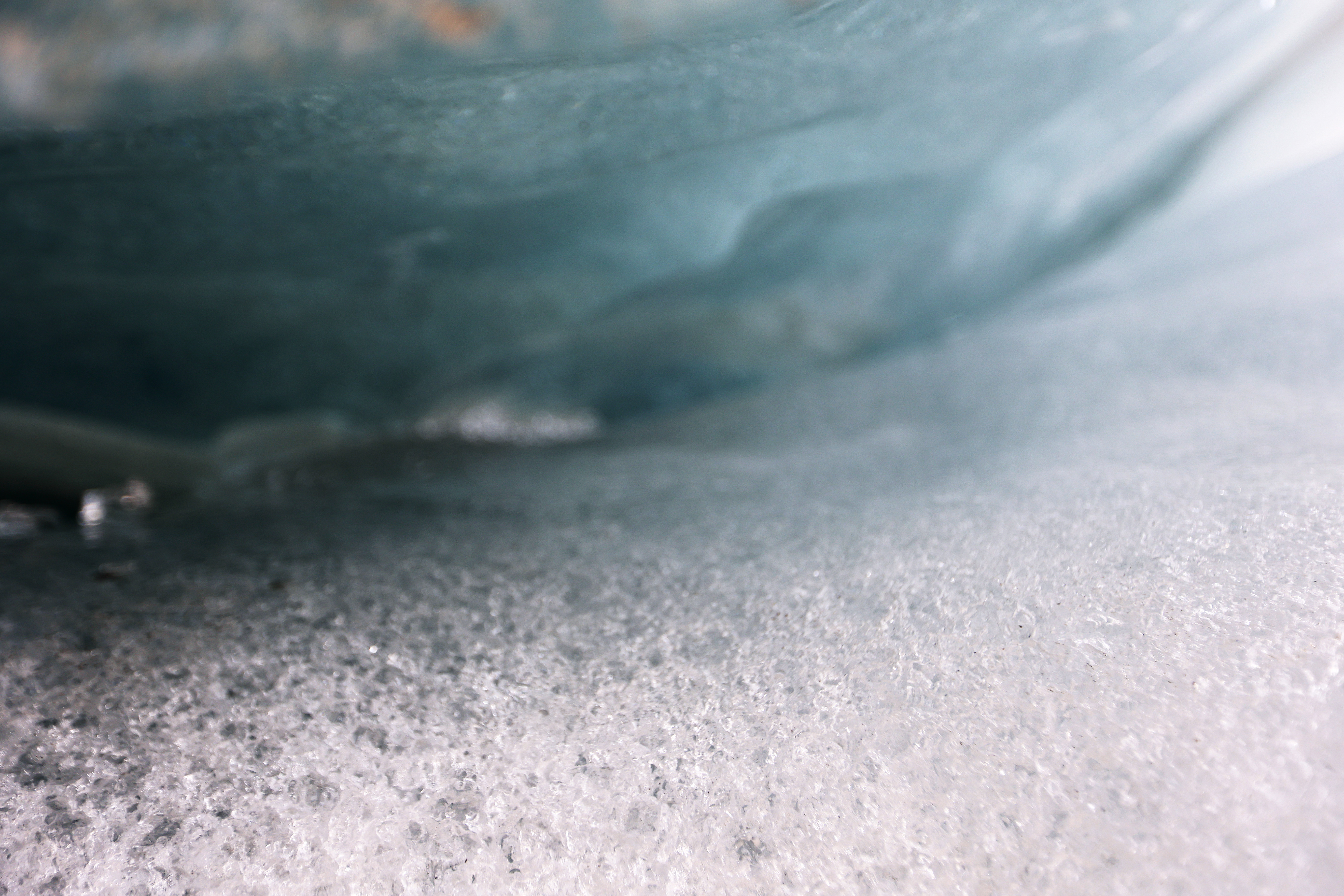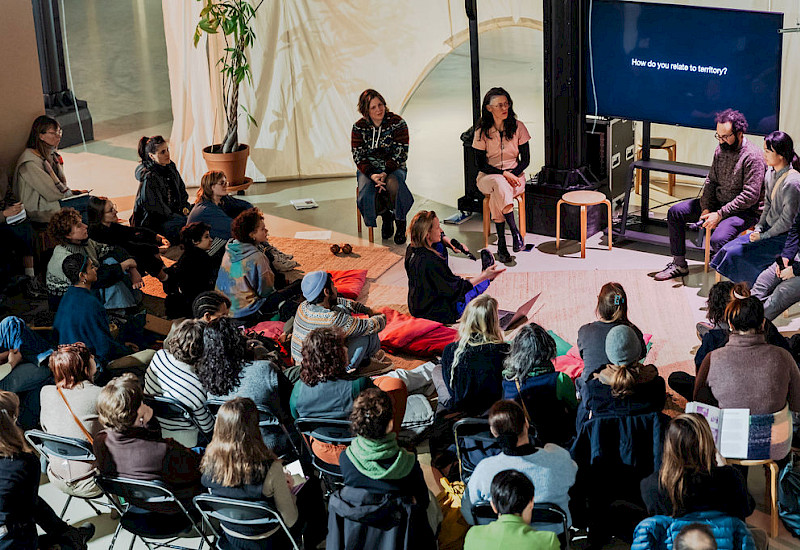Glacial Resurgence is a transdisciplinary artistic project that examines the interconnected crises of ecological devastation and the erasure of ways of knowing in the southeastern Andes of Peru, focusing on Quelccaya, the world’s largest tropical glacier. As lithium mining projects expand into the region—some overlapping the glacier itself—Quelccaya and the surrounding Indigenous lands and communities are being turned into sacrifice zones. These extractive operations accelerate the glacier’s collapse and threaten the survival of cultural practices, ancestral knowledge, and ecological stewardship maintained by highland Andean communities.
The project is initiated by Teresa Borasino in 2023 and is being developed through a tapestry of conversations with:
- Vito Yuganson Calderón Villanueva, is an Aymara social communicator and advocate for the rights of the Quechua and Aymara Indigenous peoples in the Puno region. He is the communications coordinator at Derechos Humanos y Medio Ambiente (DHUMA), a non-governmental organisation supporting Indigenous communities affected by mining.
- Yolanda Quispe is a Quechua alpaca herder, park ranger, and rondera (land defender) who lives at the foothills of Quelccaya in the community of Phinaya, Cusco.
- The project also builds solidarity relationships with members of the Phinaya community in Cusco and with local groups advocating for Indigenous rights and #Landback.
Research for Glacial Resurgence began in 2023 as part of the BAK Fellowship for Situated Practice. During multiple fieldwork trips to Quelccaya and its surrounding communities, Borasino gathered video footage, field recordings, and testimonies from glacier custodians and local leaders. These encounters form the foundation of the project’s artistic narrative and ethical orientation.
Glacial Resurgence has been made possible through the support of the Culture of Solidarity Fund powered by the European Cultural Foundation, Patagonia International Grants Program, and the Vriendenloterij Fund. The film was shown in the exhibition Sensing the Ways: On Touch, Story, Movement, and Song at Casco Art Institute in Utrecht.
Activities
Glacial Resurgence – Prelude
An immersive film installation that blends glacial footage, voice narration, and a sonic score composed by Ibelisse Guardia Ferraguti. The film traces the glacier’s pulse and the rhythms of its melting process, attuning to its breath, movements, vibrations, and circulatory flows. Structured as a poetic and sensory meditation, it mourns and re-members this glacier-being as a living body.
Glacial Resurgence–Prelude foregrounds the ethos of interdependence and reciprocity embedded in the Andean Cosmovision. For millennia, highland communities have practised regenerative forms of living, rooted in care and mutuality with the land. Through experimental storytelling, the project brings their cosmological principles into conversation as vital responses to the complex, interconnected crises of our times.
Choreographed conversations
Glacial Conversations are public gatherings that blend ritual, listening, dialogue, and shared meals. Centered on Quelccaya through video and sound, these sessions create an immersive space where human and non-human presences meet and learn with each other.
The gatherings foreground the voices of collaborators Yolanda Quispe and Vito Calderón, fostering conversations that link Andean communities with audiences in Europe.
Un/Just Transitions assemblies
This program consists of a series of dialogues that invite diverse audiences to gather, learn, discuss, and critically engage with the issues of colonial (green) extractivism, the paradoxes of the just transition, solidarity-weaving, and Indigenous resurgence. The program’s goal is bring to light the socio-political and ecological realities in the Andes, and connect them to Europe’s growing demand for lithium and the significant role the Netherlands plays in the global lithium supply chain.
Background
At 5,600 meters above sea level in the southern Andes of Peru, Quelccaya breathes as a living ice body, expanding and contracting with rhythmic pulse. Her body moves under its own weight, carving rivers of ice that wind across sacred lands. A series of interconnected pressures has destabilized Quelccaya’s delicate balance beyond repair, leaving cracks that fracture ancient ice, melting this living body into memory.
Quelccaya is the world’s largest tropical glacier and one of the longest-studied ice bodies on Earth. Since 1974, its ice has been monitored as a climate archive, revealing critical insights into global warming. Recent studies warns that the glacier may vanish within 30 years—or sooner—erasing thousands of years of climatic history and worsening Peru’s already severe water crisis. Yolanda Quispe, a glacier custodian from the affected community of Phinaya, Cusco, emphasises the stakes: “Without the ice cap, without water, we cannot live. It will affect, above all, our children and grandchildren. It is they who will be affected the most by climate change.”
Meanwhile, new open-pit lithium and uranium mining projects are advancing in the region. In January 2024, the Quelccaya Lithium Project was approved for exploration, allowing the Canadian company American Lithium Corporation to bulldoze glacial bodies and sacred territories. To date, American Lithium Corporation holds 167 mining concessions across the Cusco and Puno regions—covering over 92,000 hectares, with some concessions overlapping the glacier itself.






